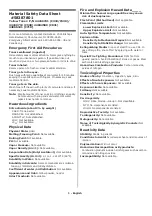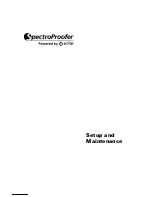
Data Files
©
2016-2017 SR Research Ltd.
73
and acceleration and compares these to the velocity and acceleration
thresholds. If either is above threshold, a saccade signal is generated. The
parser will check that the saccade signal is on or off for a critical time before
deciding that a saccade has begun or ended. This check does not affect the
recorded time of the saccade start or end, but adds some delay to the real-time
events sent through the link.
During each saccade or fixation, data is collected related to the velocity,
position, and pupil size. At the end of the saccade or fixation, this data is used
to compute the starting, ending, and average position, pupil size and velocity,
as well as the peak velocity. Velocity data is also converted into units of degrees
per second using real-time resolution information. This data is then used to
create events which are sent over the link and/or recorded in an EDF file. See
the section 4.5.3
“Eye Movement Events”
for more information on events.
4.3.2 Parser Limitations
The EyeLink parser was designed for on-line, low delay identification of
saccades and blinks. Detection of very small saccades may require off-line
processing, as the special filtering and computation of global velocity cannot be
performed on-line. In smooth pursuit research, the parser is less sensitive to
small back-up saccades (opposite to the direction of pursuit) than forward
saccades, due to the low peak velocity of back-up saccades.
The parser only looks “ahead” in the data a short time to compute velocity and
acceleration. This limits the data checking the parser can do. Post-processing or
data cleanup may be needed to prepare data during analysis. For example,
short fixations may need to be discarded or merged with adjacent fixations, or
artifacts around blinks may have to be eliminated.
Nonetheless, the EyeLink parser does an excellent job in most recording
situations. Adjusting the configuration of the parser may help bias its
performance for specific applications such as smooth pursuit or reading
research. Its performance is easily checked: record eye movements using the
display of interest, with both sample and event data. Then view the EDF file
with EyeLink Data Viewer or convert the EDF file to an ASC file to see the
correspondence between the sample data and the events identified by the
parser.
4.3.3 EyeLink Parser Configuration
The saccadic detection parameters for the EyeLink on-line parser may need to
be optimized for the type of experimental investigation being performed. For
example, neuropsychophysical researchers may need to detect small saccades
amid pursuit or nystagmus, while reading researchers will need to detect only
large saccades and will want fixation durations maximized. This section
explains the function of, and suggests values for, the most useful parser
parameters.
















































